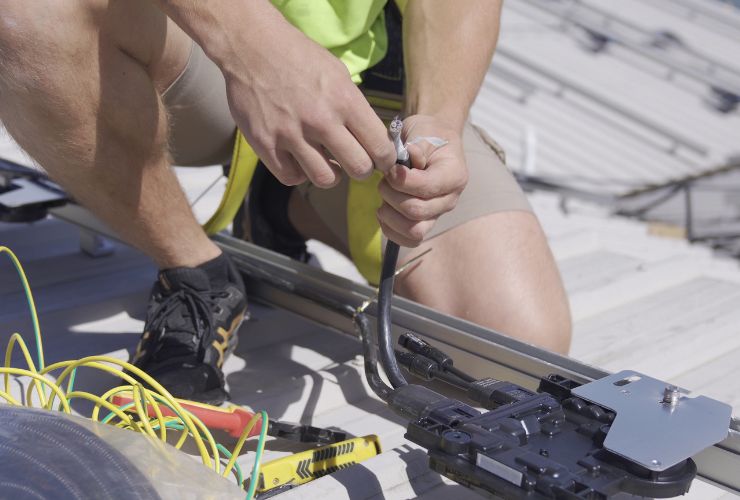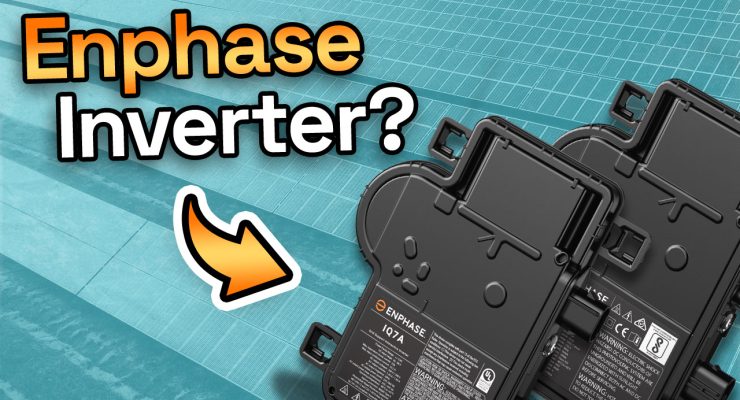Fast read
Enphase Energy, a US-based manufacturer, revolutionised the solar industry with its microinverter technology, introduced in 2008. Microinverters convert DC electricity from solar panels into AC electricity and offer some advantages over traditional string inverters. With each panel functioning independently, a single panel failure does not affect the entire system.
Enphase microinverters allow flexibility in string design and enable the use of different panel brands and wattages. The technology provides safer AC power, reduces the risk of fires and electrocution, and offers remote monitoring and software updates for added convenience.
Enphase microinverters are renowned for their reliability and long-lasting performance. While the initial cost and installation time may be higher, the benefits of increased PV system efficiency and ease of maintenance make Enphase microinverters a solid choice. Nevertheless, it is not the must-go choice in all situations.
Enphase microinverters have stood the test of time
Enphase Energy, the manufacturer of one of the best microinverters, is headquartered in the USA and started in 2006. The company sells microinverters in Australia, which convert DC electricity from solar panels into safer AC electricity to send the AC power throughout the house.
Before the invention of microinverters, the solar industry was dominated by string inverter technology. While built robustly, quality string inverters have the disadvantage that the whole solar system shuts down when they fail. In a microinverter failure, only the affected panel will stop producing solar power.
In 2008 Enphase introduced the M175, which, as the name suggested, could connect to 175W modules such as Suntech and Sharp panels at the time, being the dominant panels in Australia.

Ongoing innovation led to the regular release of new models, increasing the power class to match the prevailing panel wattage.
Here is the historic release table
2009 – release of the M190, which could handle modules up to 190 Watts
2010 – release of the M215, which could handle modules up to 215 Watts
2013 – release of the M250, which could handle modules up to 250 Watts
2016 – release of the s230 and the S280, with the 2nd being able to handle 280 Watts panels
2017 – release of the IQ6 & IQ6+, being able to have an output power of 240 Watts
2018 – release of the IQ7 & IQ7+ to replace the M 215, M250 and S series models, with a maximum power output of 295 Watts
2021 – release of the IQ8 & IQ8+. This model can handle panels in a range of wattage from 235 Watts up to 460 Watts, in both residential and commercial panels, from virtually any solar module manufacturer
Additionally, this microinverter boasts patented smart grid technology, enhancing its functionality by enabling communication with the grid. This feature is helpful when there is a high amount of solar energy being produced in the area.
The microinverter assists in stabilising the grid. By efficiently managing the flow of electricity, it prevents grid issues. This also simplifies the process of integrating solar energy into the existing energy system.

The Enphase microinverter advantages:
- A problem with one panel does not impact the whole string. In some cases, a solar system with Enphase microinverters will generate more power, resulting in increased efficiency for the PV system.
- Allows solar arrays to be installed in multiple angles over multiple roofs allowing high flexibility in string design.
- One can mix and match panel brands and panel wattage, No longer do you need to find old panel models when one seeks to expand the PV system.
- The microinverter is built to last, and one can purchase an expanded warranty for up to 25 years.
- The Enphase microinverter sends AV power back to your house by generating AC power. By not generating high-voltage DC power (like string inverters do), one can avoid the risk of arcing, which can lead to fires. AC is also less risky to suffer electrocution.
- An inbuilt rapid shutdown mechanism allows the system to turn off quickly in an emergency.
- New features can be added to the microinverter via remote software updates through the internet. This technology also allows automatic alerts about system issues to be sent to the installer or customer via the Internet.
- Enphase microinverters have a low failure rate, making such systems highly reliable. In Australian conditions, microinverters have lasted at least double the time than string inverters.
- The after-sales service from Enphase, should anything go wrong with the product, is extremely solid.
- The remote monitoring app works 24/7 to give the owner PV system output data for each panel.
Enphase microinverter disadvantages:
- Opting for a solar system with microinverters does come with some drawbacks, especially when compared to a string design. Foremost, the upfront cost of a microinverter system is generally higher than that of a string design. This is primarily because microinverters are more complex and require additional components.
- Moreover, the installation process for a microinverter system can be more time-consuming due to the need for sophisticated cabling. In a string design, one inverter is connected to many panels. But with Enphase microinverters, each panel needs its own inverter installed on the back. This means more intricate wiring work, which can lead to longer installation times and potentially higher labor costs.
- Another potential disadvantage is that advancements in panel wattage may outpace the capabilities of the latest Enphase microinverter models. This can cause “clipping.” Clipping happens when the microinverters can’t fully use the power from the solar panels. However, this issue can be mitigated if the panel wattage and the microinverter output capacity are well-matched.
Enphase microinverter systems have their advantages, including higher clean energy production and better monitoring at the panel level. Microinverter systems offer benefits such as increased energy production and improved monitoring at the panel level.
Homeowners should think about the benefits of these options before deciding. They should also consider the higher initial costs, longer installation times, and potential issues with newer panel technologies. It is important for homeowners to carefully consider these factors before deciding on a microinverter system for their home.
The verdict on Enphase Microinverters
A solar photovoltaic system with Enphase microinverters and high-quality panels will be top-notch. Producing a strong solar output in the selected location will occur. if you have shade issues, then such a solution as well as the SolarEdge optimiser variant should be preferred.
If on the other hand, you have a clear roof, no shade and not many antennas, gables, satellite dishes, valleys or neighbouring higher buildings, with other words your roof is free of obstacles, then a string inverter is also a solution that can serve you well.
Companies that push customers to choose only one technical solution may not be meeting the customer’s needs. Instead, they may be more focused on buying in bulk to get a better price than their competitors. In such a case, do not fall for the hype – and use your critical thinking cap.

